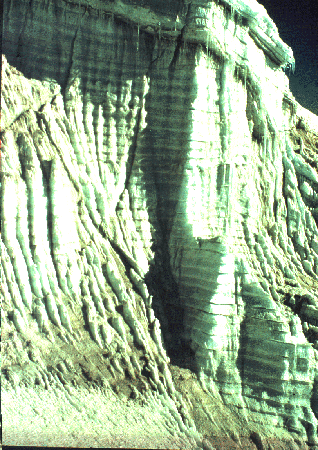

PROBLEM:
We have cored a portion of the Greenland ice cap to a depth of 1 kilometer. At the surface an annual layer of snow is 1 meter thick. In the lower portions of the core, annual layers are indistinct. We have information, however, that in another Greenland core annual layers at 1000 m average 1 cm thick. Assuming that our core is similar and that the rate of change of the ratio of age to depth is constant, we want to derive a formula which expresses the age of the ice at any given depth and determine the age of the oldest ice in the core. A similar formula expresses the distance traveled at a constant acceleration ( distance = 1/2 at2 ). In our case, age = 1/2 r (depth)2, where r is the rate at which the number of annual layers/ meter changes with depth. Our assumptions suggest that r = (100 yr/m - 1 yr/m)/1000 m = .099 yr/m2. Thus, age = 1/2 (.1) depth2, and our oldest ice would be 1/2 (.1) 10002 = 50,000 years.
Now assume that at a depth of 300 m we encounter a leaf fragment whose C14 P/D ratio is .067 . How might we change our age formula, and what would be the age of our oldest ice?
